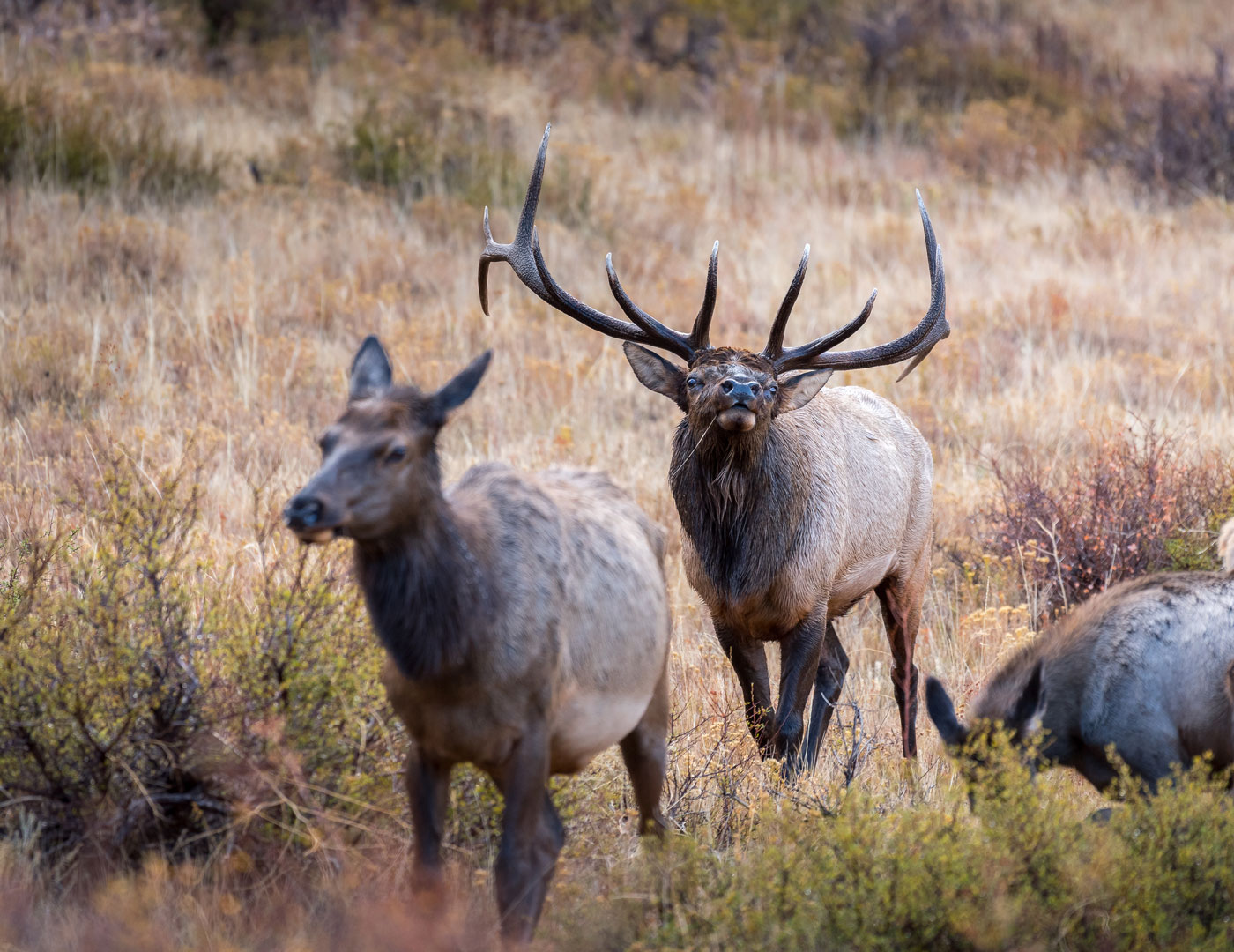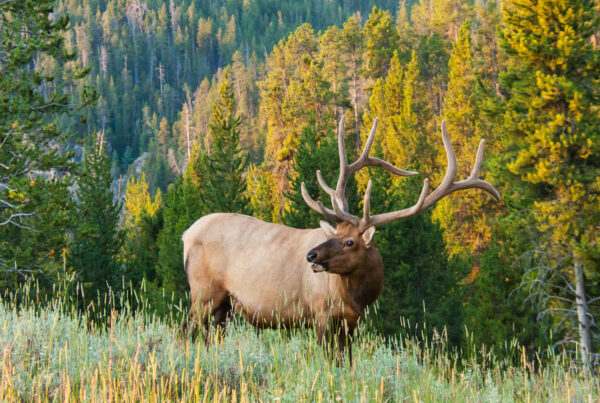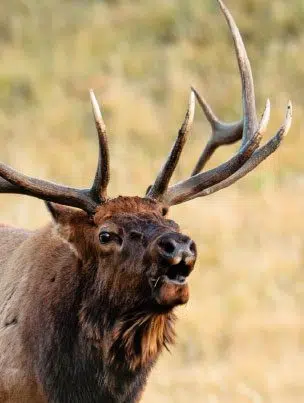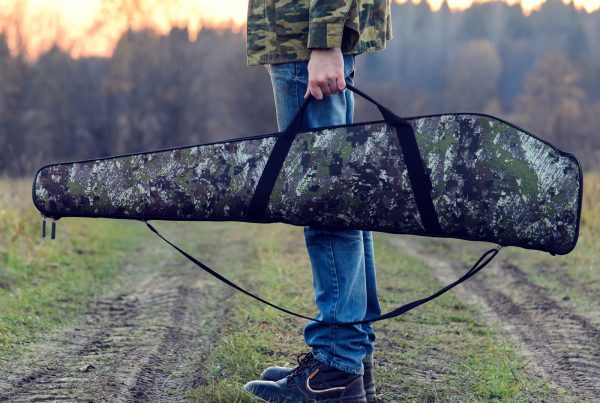Bagging that big bull elk you’ve always dreamed of can be the thrill of a lifetime. Sometimes a bit of that shine wears off when you realize “bagging” an elk doesn’t mean just shooting it. It means field dressing the elk, literally bagging up hundreds of pounds of meat, and packing it out of the wilderness.
Field dressing an elk is a big job. That’s why some hunters opt for guided elk hunting trips that include field dressing. For other hunters, field-dressing the elk is part of the challenge of the hunt. If you’re up to the task of field dressing your elk, follow these tips to get it done efficiently.
What does “field dressing” mean in hunting?
Field dressing is the process of skinning, gutting, and harvesting the meat of killed game animals. For big game animals, hunters often consider taking the head or skin of the animal to display as a trophy. Such trophies often require caping the animal to ensure a good mounting from the taxidermist. Caping requires special attention to the front quarters when field dressing an elk.
HOW DO YOU FIELD DRESS AN ELK?
Every experienced hunter may have their own elk field dressing tricks and techniques they’ve developed over the years. Almost all of them fall into two camps: the standard method or the gutless method.
Both methods aim to help the meat on the carcass to cool as quickly as possible and prepare it for packing. So, start field-dressing your elk as soon as you can.
Both field dressing methods require quality tools and materials to complete the dressing safely and as efficiently as possible. The equipment needed to field dress an elk includes the following:
-
Quality game bags
-
Multiple sharp knives (including a carving scalpel, if possible)
-
Numerous cleaning rags
-
Numerous pairs of rubber gloves
-
At least two lengths of nylon rope (about 30 feet)
-
Plastic tarp or tablecloth
-
Tenting stakes (optional)
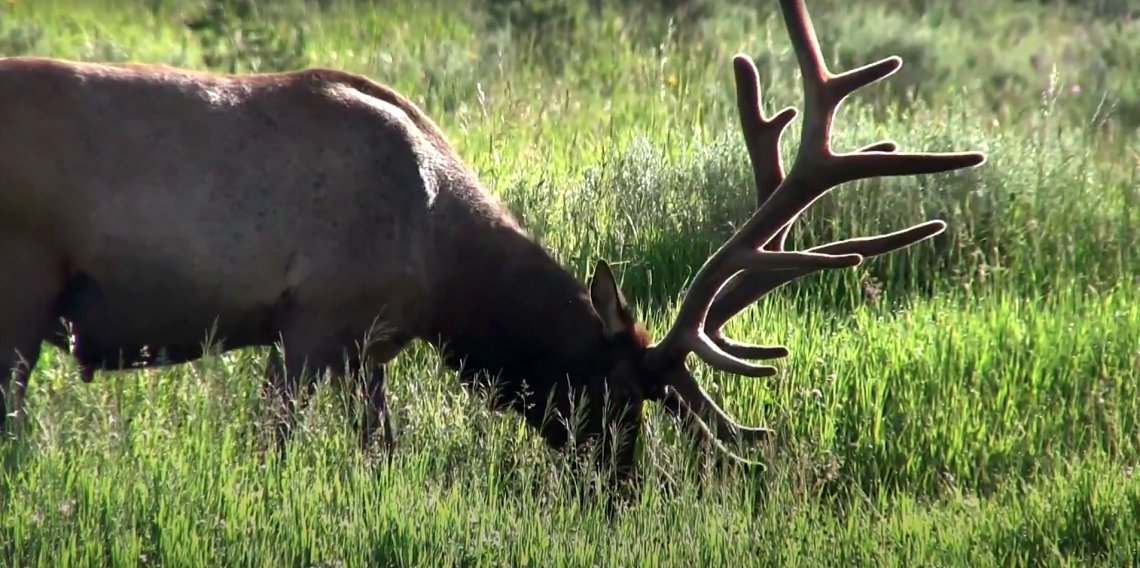
Standard Method of Field Dressing an Elk
These field dressing instructions assume you studied up on elk anatomy and killed the elk with a good shot to the heart or lungs. If your bullet tore through a lot of meat or punctured the intestine or bladder, your field dressing may require additional cutting and cleaning to address the affected area.
Caping
If you’re caping the animal (saving its head and bust for a trophy), make an incision just behind the skull. Cut at a diagonal from the incision behind the skull to each antler, creating a “V” shape. Then, from the same incision, cut directly down the spine, creating a “Y” shape out of the V.
With the animal on its side, continue the cut down the spine until you reach the fifth rib. Then cut the hide perpendicular to the spine most of the way down the exposed side of the animal. From there, continue with the rest of the process as usual until otherwise directed.
Do your best to position the elk on its back with its hindquarters downhill. It’s best to have other people around who can help you maneuver the animal (after all, an elk can weigh nearly half a ton).
Spread the hind legs and tie them to trees or rocks to hold them apart. If no trees or rocks are handy, you can use tent stakes if you have them.
Next, use a sharp knife to make an incision just above the anus. Then cut from the incision to just past the beginning of the ribcage. As you continue splitting the carcass open along the centerline, be sure you don’t cut too deep and piece the guts. Cut through the hide and the muscle, but slow down before cutting the membrane containing the guts and stomach.
After the hide and muscle are open and pulled back, pull a small section of membrane away from the innards. Cut that section carefully. Then, continue the process, slowly moving up the center cut until the membrane is completely severed. You can also find specially designed field dressing knives that help you avoid cutting into the guts of an elk while dressing it.
Next, carefully cut the skin away from the bladder and penis. Then, continue cutting the hide in half at the sternum.
Caping Note
If you’re caping the animal, stop cutting along the sternum when you reach the perpendicular cut you made earlier. Then, connect the two cuts.
Next, slowly peel the cape’s skin away, beginning at the corner of the hide made by the cut along the spine and the cut perpendicular to it. Take care not to puncture the cape as you cut the skin away from the carcass.
Continue pulling the skin back until it’s off the neck. To do so, you will need to make a small hole under the animal’s front leg. Then you can force the skinned leg through that hole to pull the skin around it. Once the sternum and underside of the neck are exposed, continue with the process as usual.
If you’re not caping the animal, you can continue cutting up the sternum to the top of the neck.
Once the sternum is exposed, split it to the collarbone with a saw or hatchet. (If you’re an avid hunter, consider investing in a saw that’s specially designed for field dressing.)
Carefully cut the diaphragm muscle away from the inside of the ribcage. The diaphragm separates the lungs and heart from the stomach and intestine. If you want to save the heart or liver to eat, it is time to cut them out.
With the chest cavity open and the diaphragm severed from the cavity wall, you can let the carcass gently settle to one side. Use ropes, rocks, or sticks as weighted anchor points to keep the chest cavity pried open.
Reach inside the neck and cut the windpipe loose.
Next, reach up through the chest cavity and grab the windpipe. Start pulling it away from the spine, cutting it away as you go. Continue cutting all the organs and guts free from the upper wall of the cavity. Work slowly from front to back.
As you approach the hind quarters, be extra careful to avoid puncturing the intestine, bladder, and rectum. Tie off the urethra and rectum with zip ties on the inside of the animal.
At this point, if you can, roll the carcass over onto its other side. Then, you can repeat the process of cutting the organs and guts away from the upper wall of the cavity, which should now be on the opposite side of the animal. Again, work front to back. This time, slowly push the gathering glob of innards toward the animal’s rear as you go.
Again, be careful as you approach the rectum. Once it’s tied off, gently cut it away from the skin. Do not let the contents of the bladder or rectum contact your meat.
Once everything is cut away from the carcass and the skin, pull all the foul innards out of the rear end of the carcass.
With everything out of your carcass, roll it over to dry, then get it cooling as soon as possible. Stuff it with ice if you can. Then you can drag it out whole, quarter it up, or bone it out and pack it out.
How do you bone out an elk in the field?
Once your elk is field dressed, you can bone it out. First, skin the rest of your carcass.
Start with the hind quarter. Find the inside of the hip joint with your knife. Slide your knife along the bone, cutting the meat down to the knee. Cut around the hip joint and the knee joint, and peel the meat off the femur in one piece.
Use a similar procedure to pull the meat off the front quarter.
With the legs removed, you can easily cut all the steaks from the top side of the carcass. Don’t forget to get the meat between the ribs too.
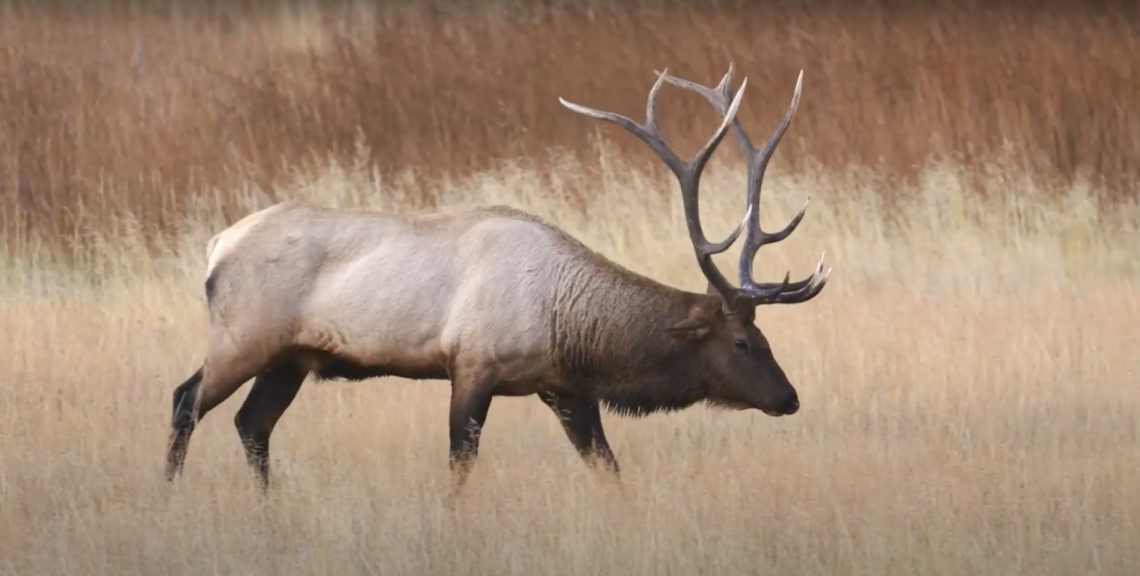
Backstrap and Neck Meat
Elk carry an abundance of meat in the neck and backstrap. The backstrap runs on either side of the spine above the rib cage. Remove it by cutting along the bone structure on either side, and remove each strap in one long piece. Take some smaller cuts of meat out of the elk’s neck.
Roll the carcass over and repeat the boning out process on the other side.
Finally, cut the tenderloin from the underside of the carcass.
Put all your meat in clean game bags to start drying and cooling.
Gutless Method of Field Dressing an Elk
The gutless method of field dressing an elk is essentially boning out the animal without gutting it, although, sometimes, the meat isn’t fully deboned. This method avoids the many complications of cutting into the animal’s abdomen. The gutless method is perfect for anyone who isn’t planning on dragging the carcass out whole.
Some hunters hesitate to use the gutless method because they think it means sacrificing the cape or the tenderloin. However, that’s a misconception; you don’t have to sacrifice those things when you use the gutless method. Randy Newberg shows us how to get it all in this informative video.
How heavy is a field-dressed elk?
Even after field dressing an elk, it can still weigh over 400 pounds. If you plan on getting all your meat, get help from friends or prepare for multiple trips during pack out.
Tips on field dressing an Elk
-
Take your pictures before you cut into the elk.
-
Use a sharp knife.
-
Cut along the grain of the fur, not against it.
-
Pull the skin away from the muscle and cut parallel to the skin.
-
Stay alert for nearby wildlife, such as bears.
What do you do after you field dress an elk?
Immediately after you field dress your elk, get the meat dry and cool. Place it in quality game bags that will help in both these processes. Pack it out as soon as you can.
If you need to take multiple trips, hang your remaining meat from a tree in game bags, preferably where it’s cool and dry. You can often drop your meat off to store at a local butcher while you go back to get the rest.
After the hunt, you can take your elk meat to a game processing company or try butchering it yourself.
Gutless Method of Field Dressing an Elk
The gutless method of field dressing an elk is essentially boning out the animal without gutting it, although, sometimes, the meat isn’t fully deboned. This method avoids the many complications of cutting into the animal’s abdomen. The gutless method is perfect for anyone who isn’t planning on dragging the carcass out whole.
Some hunters hesitate to use the gutless method because they think it means sacrificing the cape or the tenderloin. However, that’s a misconception; you don’t have to sacrifice those things when you use the gutless method. Randy Newberg shows us how to get it all in this informative video.
Get the VIP Hunting Experience at West Canyon Ranch
While field dressing an elk is a great experience for any hunter to have, you don’t need to tackle this time-consuming process with every hunt. Take the stress, time, and legwork out of your post-kill hunt with the VIP experience at West Canyon Ranch. Our fantastic guided hunts come with luxury accommodations, a guaranteed shot, and full-service cleanup. Let our experienced team field dress, butcher, and package your entire kill. West Canyon Ranch’s superior hunting experience makes our high-fence ranch in the Wasatch Range a bucket list destination for any elk hunter.


